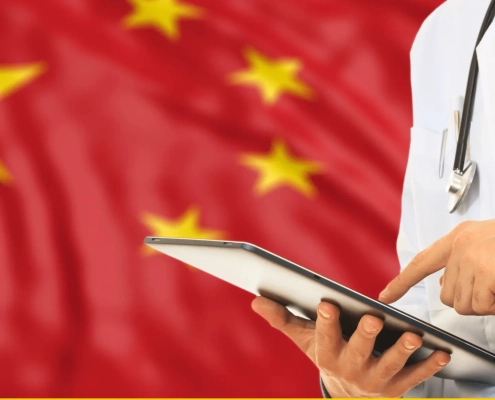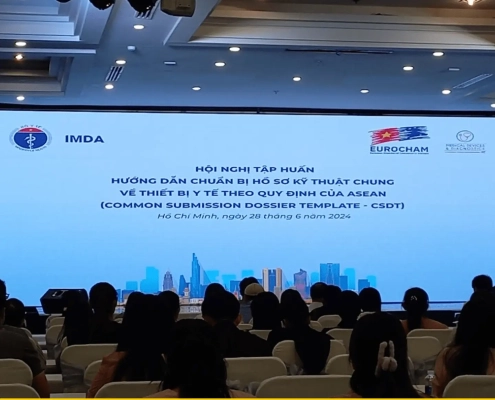Come grow with us in the US in Thailand in China in Korea in the Philippines in Taiwan in Hong Kong
Contact Us
US: +1 512 898-9222
SG: +65 3138-4148
EMAIL: Inquiry@asiaactual.com
Sign Up For Our Newsletter to Stay Informed
Singapore’s HSA Issues New Software as Medical Device (SAMD) Guidance
Published on: July 7th, 2022
Expands Guidance for Clinical Decision Support Software (CDSS)
In April 2022, Singapore’s Health Science Authority (HSA) issued new guidance for registering software as a medical device (SAMD) and Clinical Decision Support Software (CDSS) in Singapore. It intends to provide manufacturers with guidance related to standalone software, software embedded in medical devices, standalone mobile applications, and web-based software. The new guidance also addresses topics pertaining to the Quality Management System (QMS), the Total Product Life Cycle (TPLC), pre-market requirements, dealer’s licensing requirements, change notifications, post-market management, cybersecurity, and artificial intelligence (AI). More information on registering SaMD using AI in Singapore can be found here.
Regulatory Pathway for Software Medical Devices
Classifying Software as a Medical Device
Manufacturers planning to register software as a medical device in Singapore will need to first determine the device’s classification. The HSA has a classification tool to help manufacturers determine their classification here but follows GHTF guidelines and will likely match the equivalent classification used for CE Marking and/or TGA authorization.
However, the HSA has implemented some additional guidance which could affect the HSA’s classification of Clinical Decision Support Software (CDSS) . The additional requirements take into account the “significance of information provided by the standalone medical mobile application” and the “state of the patient’s healthcare situation or condition” in combination with the HSA’s guidance document, GN-13 Guidance on Risk Classification. The HSA recommends manufacturers of IVD Standalone Mobile Application refer to GN-14 Guidance on the Risk Classification of IVD Medical Devices.
Clinical Decision Support Software (CDSS) Risk Table
| Significance of information provided by SaMD to decision procxess |
|||
| Situation or condition | Treat or Diagnose | Drive Clinical/Patient Management | Inform Clinical/Patient Management |
| Critical | C | C | B |
| Serious | C | B | A |
| Non-Serious | B | A* | A |
*Standalone Medical Mobile Applications will be classified as Class B if intended to image, measure or monitor a physiological process to drive clinical/patient management; consistent with rule 10(i) of GN-13 Non-IVD Standalone Medical Mobile Applications (SaMD).
For specific examples and more detailed information on classifying software as medical devices, please refer to their recent guidance.
Medical Device Application Routes Available in Singapore
Once the classification of the product is determined, manufacturers and their local partner will need to determine the appropriate application route. Depending on the marketing history and Reference Country approvals, some medical devices can be registered quicker. For example, Class B software medical devices can be registered immediately if approved by 2 Reference Countries (US, EU, Australia, Japan, and/or Canada) under the Immediate Route (IBR). For more information on the different regulatory routes available to software and general medical devices, please refer to our Medical Device Registration page.
SaMD Essential Principles and Lifecycle Approach
As with all medical devices, the HSA evaluates software applications for their safety and efficacy. For software, the design and validation process is equivalent to the manufacturing process and will be closely reviewed during the application process. Manufacturers can refer to the HSA’s guidance document GN-16: Guidance on Essential Principles for Safety and Performance of Medical Devices for the Principles checklist applicable to all medical devices.
The HSA will review the manufacturer’s quality management system looking for evidence of the manufacturer’s Total Product Life Cycle (TPLC) looking for the following principles:
- Leadership and organization
- Life cycle supported processes
- Product realization activities
Documentation Requirements – CSDT
All applications submitted to the HSA must be in Common Submission Dossier Template (CSDT format and more information can be found in GN17: Guidance on Preparation of a Product Registration Submission for General Medical Devices nd GN18: Guidance on Preparation of a Product Registration Submission for In Vitro Diagnostic (IVD) Medical Devices.
The following sections will be required under CSDT:
- Essential Principles for safety and performance of medical devices
- Labelling requirements
- Software versioning and traceability
- Software verification and validation
- Clinical evidence
- Risk management
- Supporting documents for cybersecurity
Types Change Notifications
The HSA uses a risk-based approach to overseeing the changes to registered software and have implemented regulatory requirements appropriate to the different changes. For instance, significant changes, like Technical & Review changes, will require a more extensive review compared to Administrative changes to ensure that the change does not affect the safety and effectiveness of the software. Additional Change Notification guidance can be found on p. 21 of the Regulatory Guidelines for Software Medical Devices –A Life Cycle Approach issued in April 2020.
Below are some common examples of Changes that would require HSA approval before implementation.
A Technical Notification will be required for Class C and D and a Notification for Class B products if:
- the change affects the algorithm,
- new features are added,
- alarm functions are added or removed,
- if the change impacts the performance characteristics,
- if the change affects the operating system, or
- if the change impacts the control of the device.
All other changes, such as slight adjustments to fix an error or patch a cybersecurity vulnerability would require a Notification.
Leveraging HSA Approvals in Other ASEAN Markets
In 2021, fellow ASEAN members, Thailand and the Philippines implemented new expedited review routes benefiting ASEAN harmonization.
In Thailand, the TFDA expanded their Reliance Route program to include all products approved by the HSA, reducing review times down to 60 days from up to 250. Qualifying applications must be able to coordinate with their Singapore Registrant and Thai License Holder, along with providing identical Common Submission Dossier Template (CSDT) documents.
In the Philippines, the PFDA implemented a new expedited review process that would apply to applications submitted with the same CSDT documents approved by any ASEAN member country. This would apply to approvals by the Singapore HSA, Thai FDA, Malaysia Device Authority, and the Vietnamese MoH when they begin requiring CSDT documents in 2023.
Come Grow With Us
Please contact us if are interested in registering your product in Singapore. Asia Actual specializes in helping medical device manufacturers grow their sales in Asia with experienced, bi-lingual commercial and regulatory experts on the ground in each market. Contact Asia Actual today with any questions or support requests.
Asia Actual is a regulatory consulting company specializing in helping manufacturers grow their sales through independent license holding, direct fulfillment, and a variety of sales channel support services.






